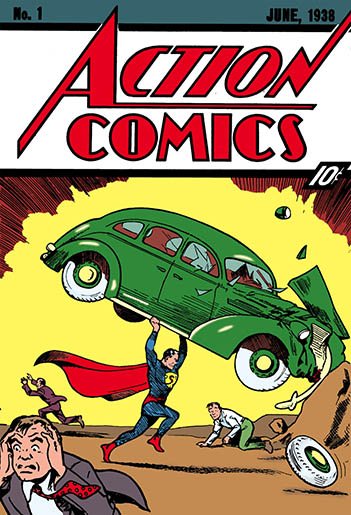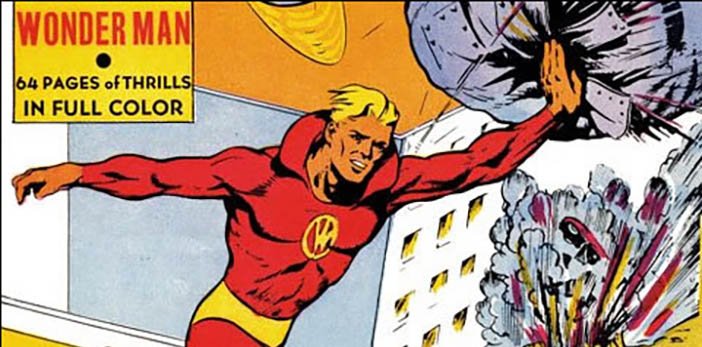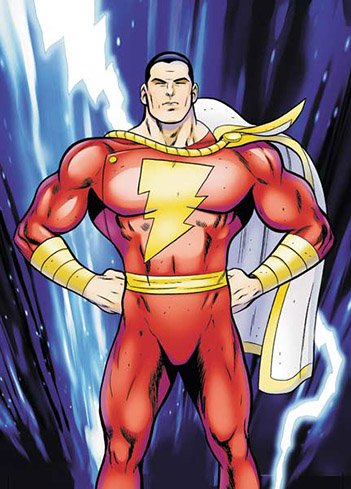From Panel To Projection Booth |1| – SHAZAM! Battle of the Super Men
Most conversations concerning the contemporary, although not altogether recent, trend in super heroics will begin by commenting on the apparent ubiquity of the phenomenon. Thanks to films like The Dark Knight and The Avengers superheroes have been popularized but perhaps more importantly legitimized. The adventures of caped crusaders are equally available and accessible to children and to adults, over the various mediums in which they are portrayed, however, there was a time when this was not the case and comic book adventures were considered strictly for children. The origins of many of the heroes who now frolic about ours screens were wrought with conflict but not against the flamboyantly dressed antagonists to which most have become accustomed. The superheroes we know and love faced the undeniably more real, although entirely more mundane threats of legal suits, censorship, and the shifting sensibilities of taste. Take a run with me on the cosmic treadmill, if you would be so kind, and cast your mind back to 1938…

Bursting onto the scene on the cover of Action Comics #1, senselessly thrashing a car to the horror of onlookers, Superman made his debut in that fated year and within a few short months had spawned dozens of imitations. The superhero was born. By the early 1940s things were well and truly taking off; Timely Comics (which would eventually become Marvel) were producing titles which included characters like the Sub-Mariner and Captain America, and Stan Lee had been appointed to an editorial position at the humble age of eighteen, while over at National Comics (now publishing under the name DC) characters like Batman, the Flash, and Wonder Woman, were being created, characters that would, despite the looming spectre of adversity, become mainstays of 20th Century popular culture and would still be foiling criminal machinations well into the 21st. But while all was well in the fictional realms depicted panel by panel the more mundane worlds of grey and black suits, legality, and profits were beginning to stir up trouble.
Superheroes proved to be very popular very quickly and as soon as publishers realized this they didn’t shy away from hopping on the bandwagon. National’s massive success in sales had prompted many other publications to branch into the comic book business. The problem was these newly minted publications needed heroes like Superman to keep up. Being the first publisher to have employed a superhero, National felt itself entitled to protect its intellectual property and so any other barrel chested, cape wearing, strong men then in publication came under fire. At the request of Fox Publications, the now renowned creator, Will Eisner created Wonder Man who was to feature in Wonder Comics published in February of. Wonder Man, Fred Carson by day, had been granted superpowers when an elderly Tibetan monk bestowed a magical ring to him and Carson used those powers to fight crime using his superpowers alter ego. Within a month of the Wonder Comics #1 being published National Comics had filed lawsuit against Fox Publications claiming copyright infringement. The battle of the Super-Men had begun!

In 1940 the decision of the very first comic book law suit (of which there would be oh so many more) forced Fox Publications to drop Wonder Man and the hero faded into the obscure limbo reserved for fictional characters no longer in print. Wonder Comics would be renamed Wonder World Comics and replace Wonder Man with characters like The Flame and the Blue Beetle who, ironically enough, now calls the DC universe his home. Emboldened by its victory another publication, Fawcett Comics, was forced under duress of another suit from National Comics to discontinue the use of the character Master Man, another Superman clone. Master Man was not the only Superman-like character at Fawcett, however, and his discontinuation was only the tip of the iceberg of what would become one of the most famous legal battles in comic book history.

Mild mannered and intrepid Billy Batson was just an ordinary, homeless, newsboy when an old man lured his down to a secret subway tunnel. Taken to a strange cave the mysterious man reveals he is the wizard Shazam and that Billy has been chosen as an avatar to protect the world. All Billy had to do was repeat the wizards name, “SHAZAM!” and the magic lightning would grant him the wisdom of Solomon, the strength of Hercules, the stamina of Atlas, the power of Zeus, the courage of Achilles, and the speed of Mercury. Captain Marvel was born. Although red and yellow in colour scheme, Captain Marvel bore many similarities to Superman including his skin-tight costume and cape, his set of superpowers, his secret identity, although there were also notable differences between the two such as Captain Marvel’s ability to fly. Superman at this time could only jump astoundingly high into the air, it was only years later that Superman would adopt the ability as it had been originally envisioned in Captain Marvel.
National filed suit against Fawcett in 1941 but the case wouldn’t go to trial for another seven years. In that time Captain Marvel managed to really take off and became the most successful and best-selling superhero of the day and eventually proved to be the most popular of all the superheroes during the Golden Age, which began with Superman gracing the cover of Action Comics #1 and ended roughly around the middle of the 1950s, even surpassing Superman in sales. Fawcett created the Marvel family which included an extended cast of characters related to Billy, like Freddy Freeman who became teenage superhero Captain Marvel, Jr. and Mary Bromfield who became teenage superheroine Mary Marvel and (my personal favourite) the anthropomorphic talking tiger Taky Tawny. Together the Marvel Family fought the likes of mad scientist Doctor Sivanna and Captain Nazi, their adventures narrated by the brave, freelance newsboy Billy Batson. These innovations, which would inspire the Superman family and Batman family and inform the idea of superhero for decades to come, would well outlive their original publisher Fawcett, as the publisher had to go to trial with National eventually.
National Comics Publications v. Fawcett Publications, went to trial after seven years the initial cease and desist order had been sent from National to Fawcett in 1941 and in 1948. The verdict delivered in 1951 was that while Fawcett had infringed upon Nationals intellectual property, however, National had also failed to copyright some early Superman newspaper strips and so the case found in favour of Fawcett publications. National appealed the decision and in 1952 Judge Learned Hand (what a name!) found in favour of National and sent the case back to retrial. Outside of the court case, however, everything wasn’t going to well for Fawcett.

Initial sales for Captain Marvel’s comics had been somewhere in the region of fourteen million units in the early 1940s but by the 1946 sales had dropped by half and showed no signs of regaining as interest was slowly declining for superhero adventures. As such, in an out of court settlement, Fawcett ceased all publications of containing Captain Marvel and paid National damages of $400,000. Even in their infancy comic book superheroes were worth big bucks. Fawcett would try to reinvigorate its comic books throughout the late 1940s and early 1950s but in 1953 ceded defeat and shut down its entire comic book division. Fawcett weren’t alone in their declining sales and popularity.
Superheroes showed resilience in the face of these initial legal battles but whether due to the lacking attention span of their key demographic or to the saturation of the capes and colours adorning the covers on newsstands, the popularity of the superhero was waning after WWII and by the late 1940s publishers began a reshuffle of their titles. Books specifically dealing with a titular hero were less in demand and so publishers organised their titles around genres like westerns, pulp sci-fi, detective yarns, and horror stories. Many heroes like Wonder Woman and even Superman and Batman had originated in anthology books like Action, Detective, and Sensation Comics, where their first appearance was only a single story among a few others so the leap wasn’t a huge set back. Many popular heroes, such as the three mentioned above, managed to keep their ongoing series while others like Green Lantern and the Flash weren’t so lucky. Regardless of who got their own book, and despite surviving the earlier legal hoity-toity and declining popularity towards the end of the 1940s, the greatest foe that the superhero clan had yet faced loomed, silhouetted on the horizon of 1954, with a name that still strikes fear into contemporary liberals everywhere; The Censor.

